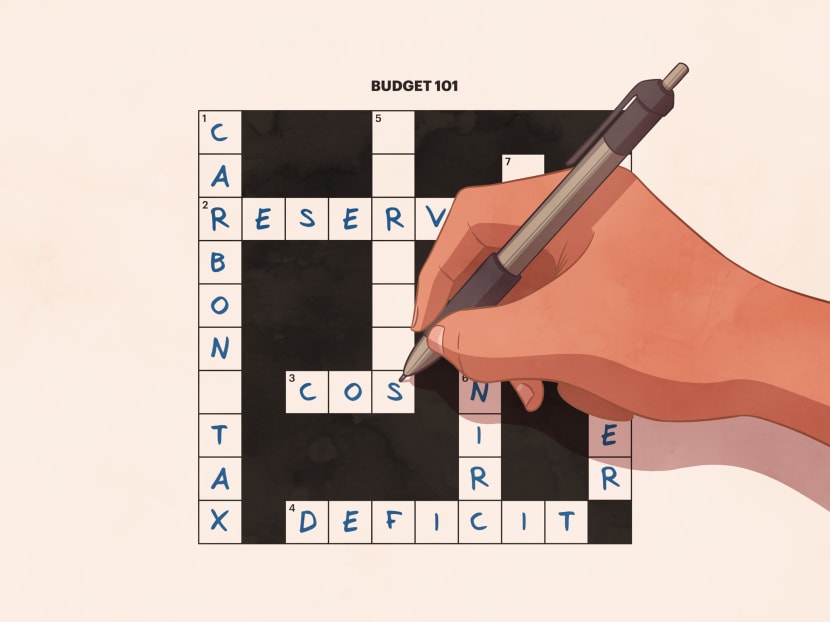Budget 101: Clueless about NIRC, special transfers, fiscal deficit and surplus? We explain the Budget jargon
SINGAPORE — The annual Budget statement will be delivered by Finance Minister Lawrence Wong in Parliament on Friday (Feb 18).

On Friday (Feb 18), Finance Minister Lawrence Wong will deliver this year's Budget statement. To help Singaporeans better understand the country's budgetary process and the issues at hand, TODAY is running a series of articles to explain basic concepts, terms and essential background information in the lead-up to Budget Day 2022.
- The 2022 Budget statement will be delivered by Finance Minister Lawrence Wong in Parliament on Feb 18 at 3.30pm
- This is the Government’s proposal on the sum of money it expects to receive and how it intends to raise revenue and spend the money
- It also marks the beginning of debates in Parliament on the Budget statement
SINGAPORE — The annual Budget statement will be delivered by Finance Minister Lawrence Wong in Parliament on Friday (Feb 18).
This is the Government’s proposal on the sum of money it expects to receive and how it intends to raise revenue and spend the money.
The Budget is usually considered in February and March each year, and marks the beginning of debates in Parliament on the Budget statement.
So, for those who may not be familiar with Budget jargon, here is a rundown of terms that may come up and what it means.
Reserves: Singapore’s national reserves are the country’s piggy bank. It comprises the nation’s combined assets of land, buildings, cash and financial investments, minus the liabilities — such as government spending. It is where the Government shores up funds for the future and for use during emergencies.
To help Singaporeans during the Covid-19 pandemic, the Government took a total of S$53.7 billion from the reserves for relief efforts. This includes the S$52 billion set aside over five Budgets in 2020 and S$1.7 billion in 2021.
While the Government said that it committed another S$11 billion from the reserves during the Budget announcement in 2021, S$9.3 billion was from funds that had not been deployed in the previous year.
Any surplus accrued at the end of a financial year (FY) during a particular Government’s term is stored as current reserves. These funds can be used in subsequent FYs. The Government‘s FY begins on April 1 of every calendar year and ends on March 31 of the next calendar year.
Revenue and expenditure: Government revenue refers to all income the Government receives, including taxes, custom duties, revenue from state-owned enterprises, capital revenues and foreign aid. The money is used for expenditure.
Government expenditure refers to the allocation of money for infrastructure development, economic programmes or social spending.
Committee of Supply (COS): The Budget process begins with the annual Budget statement presented by the Finance Minister outlining the Government’s financial policy for the coming FY and the fiscal measures to be implemented.
Following this, Parliament sits as the Committee of Supply to examine each ministry’s plans. This is when the various ministries can go into greater detail regarding the Budget, debate the estimates of expenditure and decide whether to approve the allocation of funds for public services for the next FY.
This debate usually lasts for seven days or more.
Budget deficit or surplus: A budget surplus is when the revenue exceeds the expenditure. A budget deficit is when expenditure exceeds revenues.
Any surplus accrued at the end of an FY will be kept as current reserves, which the Government may tap, if necessary, in subsequent FYs during its term.
At the end of each term of government, the accumulated current reserves will be transferred to the past reserves.
In contrast, a budget deficit for a particular FY can be offset by surpluses in the Government’s current reserves accumulated in previous FYs.
However, if a Government ends up with a deficit in its first year after assuming office, it would have to draw down the past reserves to balance the Budget, and that would require approval from the President.
This would also be the case if a Government’s accumulated surplus from previous years during its current term is unable to offset a budget deficit incurred at the end of an FY.
Contingency fund: A reserve of money set aside to cover urgent, unforeseen expenditures.
Goods and services tax (GST): GST is a tax that is paid on goods or services consumed domestically, including imports. The GST is paid by consumers, but it is remitted to the Government by the businesses selling the goods and services.
Carbon tax: The Government charges a carbon tax of S$5 per tonne of greenhouse gas emissions on companies that emit at least 25,000 tonnes of greenhouse gas emissions yearly.
The carbon tax aims to incentivise emissions reductions across all sectors and support the transition to a low-carbon economy.
Net Investment Returns Contributions (NIRC): The NIRC framework allows the Government to spend up to 50 per cent of the net investment returns on net assets invested by Singapore's sovereign wealth fund GIC, the Monetary Authority of Singapore and state investor Temasek Holdings — the three entities that manage and invest Singapore's reserves — and up to 50 per cent of the net investment income derived from past reserves from the remaining assets.
In other words, half of the estimated gains from investment is spent and the other half is put back into the reserves to preserve its growth for future use.
Since 2016, the NIRC has been the single largest contributor to government coffers, overtaking corporate and personal income tax, and GST — the three largest sources of tax revenue.
Special transfers: One-off transfers given by the Government to businesses and households, as well as top-ups to endowments and trust funds, usually for social protection, income redistribution or other targeted economic objectives. Examples of one off-transfers include the Wage Credit Scheme, MediSave top-ups in the Central Provident Fund and GST vouchers.
Dependency Ratio Ceiling (DRC): The DRC is a quota setting the maximum number of foreign workers a firm can hire for every full-time Singapore worker it employs.








